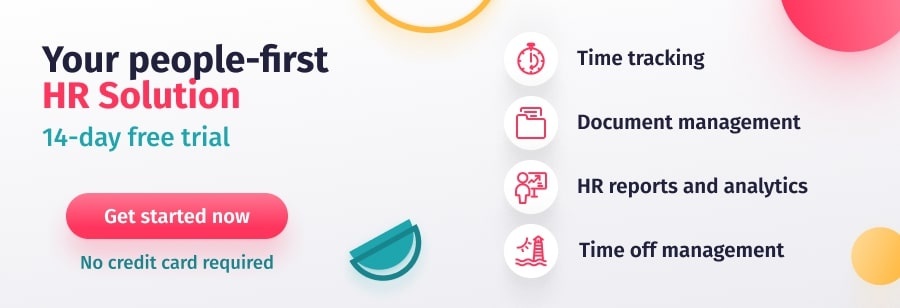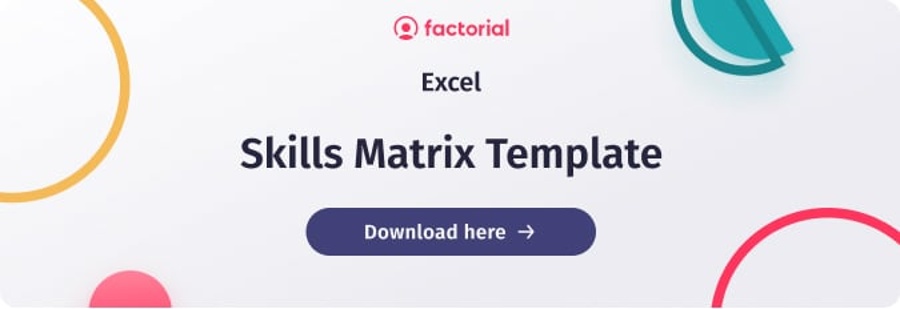As the saying goes, strangers are just friends waiting to happen. Imagine the interactions amongst employees in your workplace. Is there room for improvement? It just so happens, mentoring in the workplace can promote inclusivity and friendliness in daily interactions.
According to a 7 year-long study by the Harvard Business Review (HBR), effective mentorship programs combat hyper-competitiveness and sterile corporate cultures. Companies that experience rapid growth often have difficulties establishing meaningful connections between associates. As a result, turnover and attrition rates increase and the company’s health is put in danger.
So, how can workplace mentorship programs work to improve employee learning and development while increasing retention and inclusion? And how can HR incorporate them into development plans for employees?
- What is Mentoring in the Workplace?
- Benefits of Mentoring in the Workplace
- Types of Mentoring Programs in the Workplace
- How to Start a Mentoring Program in the Workplace
- How to Create a Workplace Mentorship with Software
What is Mentorship in the Workplace?
In general, mentorship is a relationship between two people that involves sharing experience and skills. Typically, a more experienced mentor guides and supports a less experienced mentee.
Merriam-Webster defines a mentor as “a trusted counselor or guide”. In the workplace, “trust” is an important quality to take into consideration, especially while trying to build a solid team through mentoring or coaching in the workplace.
Benefits of Mentoring in the Workplace
Both older and younger employees are more likely to stick around when there is a sense of genuine comradery and cooperation amongst colleagues. Mentoring in the workplace often helps new talent feel integrated into a team on both a personal and professional level. But it isn’t a one-way learning process. Executives and more experienced employees can also benefit from their roles as mentors.
Here are some of the positive outcomes of mentoring programs in the workplace.
Workplace Mentoring Leads to Career Progression
Perhaps the most obvious benefit of having a mentorship program in place is the increment in employee growth and talent development. This is especially important for larger or rapidly growing companies looking to reskill and upskill their workforce. For this reason, HR professionals should be sure to include mentorship as part of their development plan for employees.
Mentoring Improves Onboarding Experiences
For new employees, mentorship programs can enhance the quality of the onboarding experience. New employees are often initially anxious and confused. Having a go-to person for questions can ease the transition into a new work environment.
Mentoring in the Workplace Promotes Inclusivity
Nothing improves employee interaction and engagement like 1-to-1 interactions. Mentorship programs are designed to help individual people express their concerns and learn how to grow. What could be a better way to promote inclusivity in the workplace?
Workplace Mentorship Programs Increase Retention Rates
Studies show that workplace mentorship programs have a positive correlation with employee retention rates. Employees who feel well adjusted to the company culture are more likely to stick around. Mentorship programs can be a great way to create lasting bonds and a lasting workforce.
Create a Positive Work Environment
A few close bonds go a long way in ensuring a happy workforce. Employees who can establish deeper connections with team members are more likely to feel more supported and get the most out of their workplace environment.
Types of Mentoring Programs in the Workplace
Workplace mentoring programs come in all shapes and sizes. In order to adopt the program that works for you, check out these different possibilities.
- Career Development Mentorship- Like training programs, mentorship can help new and existing employees build confidence and proficiency in their roles. This is especially great for companies that would like to stimulate growth, design thinking, and workforce development.
- Diversity Mentorship- For under-represented groups, mentoring can have a big impact on career development, employee participation, and overall feelings of inclusion and acceptance. Consider this as an option to improve diversity and inclusion efforts.
- Reverse Mentorship- This type of pairing involves an executive mentor paired with a more entry-level mentee. Aside from encouraging horizontal leadership, reverse mentoring can increase transparency, empathy, and cooperation between different seniority levels.
- Peer Mentorship- Peer mentoring works especially well for employees who are working in similar or the same roles. Rather than a more hierarchical mentor-mentee relationship, these employees learn from each other based on their shared struggles and skillsets.
But what are the steps towards creating effective mentorship programs? And how should HR incorporate them into the company culture?
How to Start a Mentoring Program in the Workplace
Before moving forward, it’s essential to have a concrete destination in mind. Here is a step-by-step guide for HR professionals who wish to embark upon a workplace mentorship program.
Determine Your Objectives
Firstly, in order to start a successful workplace mentorship program, HR professionals need to lay out their objectives. Objectives can consist of skills gaps that need to be filled and opportunities that point towards potential growth.
In order to isolate problem areas and detect growth opportunities, HR professionals should use tools like a skills matrix template, or a training needs analysis. Customizable HR reports allow professionals to combine key performance indicators (KPIs) relevant to mentorship efforts.
When thinking about analyzing training needs before putting a workplace mentorship program in place, keep these specific KPIs in mind.
- Employee satisfaction
- Employee engagement
- Training course participation rate
- Training course completion rate
- Employee retention rate
- Employee turnover rate
Based on the data, HR professionals can create a training dashboard and tailor mentorship programs to the specific needs of their workforce. The findings can be used to help with the next step, deciding upon the structure of the program.
Determine the Structure of the Program
As stated before, there are different types of mentorship programs in the workplace. Secondly, after determining the qualities and purpose of the program, you need to consider the type of pairing that occurs. Here are some of the approaches that human resources take to match mentors and mentees.
- Assigned pairing- With assigned pairing, human resources match mentors and mentees based on their goals, abilities, and achievements. HR professionals may use assigned pairing strategically to fit in with their determined development objectives.
- Personality Pairing- Generally, personality pairing consists of mentors, and mentees completing a survey of quick personality-based questions. Based on their responses, they are paired with a matching partner. Although they are not perfect, personality tests are usually good indicators of a person’s learning and communication style.
- Cross-Departmental Pairing- Especially in larger companies, it’s easy for employees to stay within their department. In order to encourage employees to branch out, consider using cross-departmental pairing. This allows employees to interact with team members outside of their normal circle, thereby understanding a wider scope of the company and its functions.
- Voluntary pairing- With voluntary pairing, mentees decide upon which mentor they would like to partner with or vice-versa. This type of pairing is often more natural and allows employees to select a partner that they feel comfortable with learning from and/or teaching.
It’s especially important to carefully and deliberately decide how you would like to match participants. If assigning pairs, determine the best questions to ask participants. Successful mentor/mentee teams will add credibility and encourage future participants.
Get the Word Out
Make sure that everyone knows about the new program! In order to increase awareness, try posting about it on employee forums and company emails. Generally, shared physical and virtual spaces are good options. Anywhere that employees might happen to be looking on a regular basis!
When you are reaching out to your workforce, don’t forget to include details about the program and how participants can become involved. Once your program is going, ask to document participants with photos. Acknowledge exceptional mentors and mentees for their efforts with small gifts and recognition in company meetings.
Evaluate the Program
Lastly, it is important to evaluate the success of your mentoring program. While keeping track of your efforts, take a look at the objectives set at the beginning of the process and compare them to post-mentorship program KPIs. Has the program created any significant changes? Were they the changes that you had hoped to see?
Keep a clear record of how the program changes your company’s learning culture over time. From this information, it is possible to tweak the program to better satisfy the needs of the company.
How to Create Workplace Mentorship Program with Software
Work mentorship programs are advantageous to everyone. Through effective workplace mentorship, employees won’t feel like a number. They will be able to spread their wings and achieve new professional heights.
In order to create successful workplace mentorship programs, HR professionals need to have a clear understanding of the strengths and weaknesses of their team. Performance management software can help human resources to track employee performance, create performance appraisals and personalize employee reviews with questions and custom reports.
Measuring employee performance with software is the best and most efficient way to visualize your workforce’s achievements and potential. With it, HR can gain insight into every level of the workforce and implement the best-suited mentorship program for their team.



